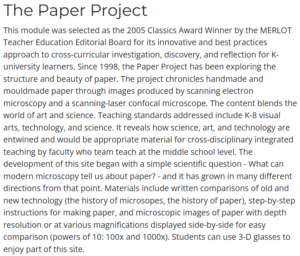I started off this week with thinking I would evaluate just ONE OER website, and then fell down a comparative rabbit hole of FOUR different OERs.
So, let me start off by saying, this is just my humble opinion, and that I perhaps have much more to learn compared to what some others may already know. In fact, this exercise made me feel a little naive about open education overall, even though I have accessed and used some of the suggested OER websites such as TedEd or Khan Academy. Theoretically, from an educational standpoint, I would suggest YouTube could even be considered a OER and is very widely used by I would be so bold as to say majority of teachers.
First off, the OER movement is something that could very well be transformative in education, especially when thinking of this idea of democratizing access to learning materials and creating a greater sense of equity for learners. I fully support the idea of free access to resources whether it be for the teacher or the learner. In fact, I was quite aggrieved by the fact that I had to for the first time pay for a textbook this fall as a graduate student, every other course has made use of open education resources such as BC OpenEd Campus.
However, I looked at four new-to-me resources which I have evaluated as follows:
OpenLearn (Open University)
Ok, which name does this go by? Open Learn, Open University or Open Ed? All three names are used interchangeably, and I find that a bit cumbersome. Picky, I know, but also realistic?
Name judgement aside, of the four, I found this one immediately to be most appealing to the eye for its layout, use of headings and seems to be quite user-friendly. There are hundreds of free courses, videos and other resources across a number of subjects. The topics are extensive. Personally, I also appreciated the differentiation between courses, study skills and work skills. While I was perusing, I found a few articles, activities, and videos that I would use in either ELA or Law classes that I teach. I appreciate that there were times, like this is a 5 minute activity on facial recognition abilities as eye witnesses that would be easy to integrate in a Law 30 class. Then, it goes further and suggests related activities, articles, videos, etc. that could also be used. Helpful!
Negatives would include how it is incredibly extensive, and could be a literal rabbit hole to fall into where you are looking through endless possibilities. Even with narrowing it down with the headings, there are many many options to scroll through.
OpenLearn Create Collections
Ok, so this one was intriguing, because it is very global in nature. Meaning, numerous courses were available in a multitude of languages and there were also courses available from any number of different countries around the world. As a collaborative platform, a person could access content, but there is also the option to CREATE content. Which is interesting to me, but I think is also a very niche area for learning. The average educator would not find this site useful or beneficial.
I was intrigued by the fact that there is a universal search of other OER content on other OER sites. So, I typed in a couple searches to see what would come up. And a topic as broad as the Second World War, brought up zero results. This is mind blowing, because there are literally millions of websites on the topic, but I guess when it comes to searching for OER content, it was a no-go. That or the search engine didn’t like my non-specific search. However, when I searched for Sinclair Ross’ short story, The Painted Door, it gave me a result. Overall, I am not sure any of my colleagues would find this one useful.
Much like a fine wine, Merlot has been given the thumbs up by peers! Sorry, wine jokes aside, Merlot is intended to provide peer-reviewed materials. It also has tools for creating and sharing individual content.
However, the real benefit of Merlot, is that you can search content and find full textbooks, books, curriculum, activities or lesson plans that would be useful in the classroom context. This time when I searched the Second World War, actual content and lesson plans came up, which is the more expected result. Because educators can contribute their own work, this could include tried and true lesson plans, such as The Paper Project. Which sounds like a great middle years science experiment.

OpenStax is the last one that I looked at, and it provides, free peer-reviewed digital textbooks and teaching tools for high school and up. What grabbed my attention instantly was the suggestion of auto-graded assignments. A teacher could integrate assignments or activities to their LMS and have all the content and assignments there to be graded. In theory, this sounds like an amazing cheat code to teaching. However, the subject areas are limited, and then when I looked there are limited LMS options and a fair number of technicalities to go through which may or may not have been over my head. (I quit when the LMS I use was not available.)
So, what about the content for K-12 education? This is where I got excited, because it looked great and is so nicely organized. And then instantly deflated when I realized all information was only tied to one or two textbooks and the teacher resources connected to those textbooks.
Overall, I understand these vast resource hubs as being groundbreaking. However, they are VAST, meaning educators, teachers, busy people, do not have time to weed through the extensive libraries to find the handful of resources that would benefit them in their classroom for any given topic. Hey, even wandering through these four websites was more time than I would normally dedicate to searching for new resources.
When it comes to finding resources to match up with curriculum needs, many of these OER have either an American focus, or a university level focus, which makes it a fairly hard sell for K-12 education. In order for the OER to be more accessible, and user-friendly to the K-12 educator, they need to develop something that would work to provide for the needs of those educators. Because, it is awesome when there is something that allows us to not re-create the wheel.
